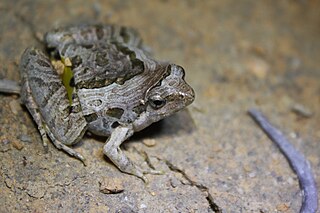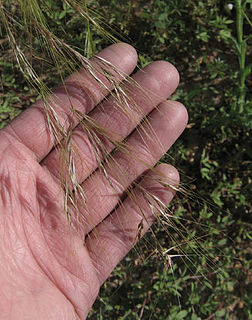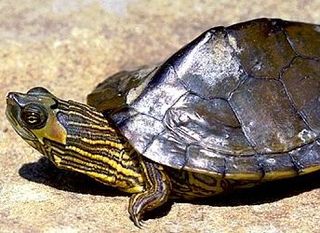Related Research Articles

The Immaculate Conception is a doctrine of the Roman Catholic church that states that the Virgin Mary was free of original sin from the moment of her conception. First debated by medieval theologians, it proved so controversial that it did not become part of official Catholic teaching until 1854, when Pius IX gave it the status of dogma in the papal bull Ineffabilis Deus. Protestants rejected Ineffabilis Deus as an exercise in papal power and the doctrine itself as without foundation in Scripture. Although Eastern Orthodoxy reveres Mary in its liturgy, Patriarch Anthimus VII of Constantinople characterized the dogmas of the Immaculate Conception and papal infallibility as "Roman novelties". The iconography of the Virgin of the Immaculate Conception shows her standing, with arms outstretched or hands clasped in prayer, and her feast day is 8 December.

Stipa is a genus of around 300 large perennial hermaphroditic grasses collectively known as feather grass, needle grass, and spear grass. They are placed in the subfamily Pooideae and the tribe Stipeae, which also contains many species formerly assigned to Stipa, which have since been reclassified into new genera.
Claudia Pulchra was the name of several women of Roman gens of Claudii during the 1st century BC and 1st century AD. The Latin pulchra is the root of the English word pulchritude.

The banded bullfrog is a type of frog in the microhylid family. It is also known as the Asian painted frog, Malaysian painted frog, Burmese painted frog, rice frog, and bubble frog. In the pet trade, it is sometimes called the chubby frog. They have round bodies with mahogany brown backs and cream stomachs. The distinctive stripes down the side can range from copper-brown to salmon pink in color. Males have darker throats than females. Frogs grow to about 8 cm (3 in) with females generally being larger than males. They may live for as long as 10 years. Although prevalent in the pet trade, very little is known regarding its behaviour in the wild. They exude a sticky mucus when threatened, which is not toxic but has an unpleasant taste. A former subspecies in South India and Sri Lanka is now known to be a separate, related species, Uperodon taprobanicus.

Microhyla pulchra is a species of narrow-mouthed frog found in northeastern India, southern China, and Southeast Asia south to at least Thailand but possibly as far south as Malaysia and Singapore. It has also been introduced to Guam.

Nassella pulchra, basionym Stipa pulchra, is a species of grass known by the common names purple needlegrass and purple tussockgrass. It is native to the U.S. state of California, where it occurs throughout the coastal hills, valleys, and mountain ranges, as well as the Sacramento Valley and parts of the Sierra Nevada foothills, and Baja California.

The beautiful jay is a species of bird in the crow and jay family Corvidae. It is closely related to the azure-hooded jay, and the two species are considered sister species. The species is monotypic, having no subspecies. The specific name for the beautiful jay, pulchra, is derived from the Latin word for beautiful.

The montane monkey-faced bat or montane flying monkey is a megabat endemic to the Solomon Islands. It is listed as a critically endangered species. Due to its imperiled status, it is identified by the Alliance for Zero Extinction as a species in danger of imminent extinction. In 2013, Bat Conservation International listed this species as one of the 35 species of its worldwide priority list of conservation. Only one individual has ever been found.

Eurydice pulchra, the speckled sea louse, is a species of isopod crustacean found in the northeast Atlantic Ocean.

Cymbiola is a genus of large predatory sea snail, a marine gastropod mollusk in the family Volutidae, the volutes.

Anniella pulchra, the California legless lizard, is a limbless, burrowing lizard often mistaken for a snake.

The Alabama map turtle is a species of emydid turtle endemic to the southern United States. Differentiation from other turtle species includes a black stripe running down the center of its back with knobs extruding from it, but these projections wear down with age. T.H. Bean and L. Kumlen first collected the Alabama map turtle in July 1876 from a lake near Montgomery, Alabama. Type locality for this species is Montgomery County, Alabama. Baur described and named the Alabama map turtle in 1893. The genus Graptemys includes nine species of mostly aquatic turtles.

Nepenthes pulchra is a tropical pitcher plant endemic to the Philippine island of Mindanao, where it grows at 1300–1800 m above sea level. Its discovery was announced online in August 2011.

Tota pulchra es, WAB 46, is a sacred motet by the Austrian composer Anton Bruckner.
Neoserixia is a genus of longhorn beetles in the subfamily Lamiinae.
Claudia Pulchra (14 BC – AD 26) (PIR2 C 1116) was a Patrician woman of Ancient Rome who lived during the reigns of the Roman emperors Augustus and Tiberius.

Crepis pulchra is a European species of flowering plant in the daisy family with the common name smallflower hawksbeard. It is widespread across much of Europe as well as in Morocco, Algeria, and western and central Asia. It has also become naturalized in the parts of the United States and in the Canadian Province of Ontario.
Neoserixia delicata is a species of beetle in the family Cerambycidae. It was described by Masaki Matsushita in 1933.
Neoserixia longicollis is a species of beetle in the family Cerambycidae. It was described by Gressitt in 1935.
Neoserixia schwarzeri is a species of beetle in the family Cerambycidae. It was described by Gressitt in 1935.
References
- ↑ BioLib.cz - Neoserixia pulchra. Retrieved on 8 September 2014.